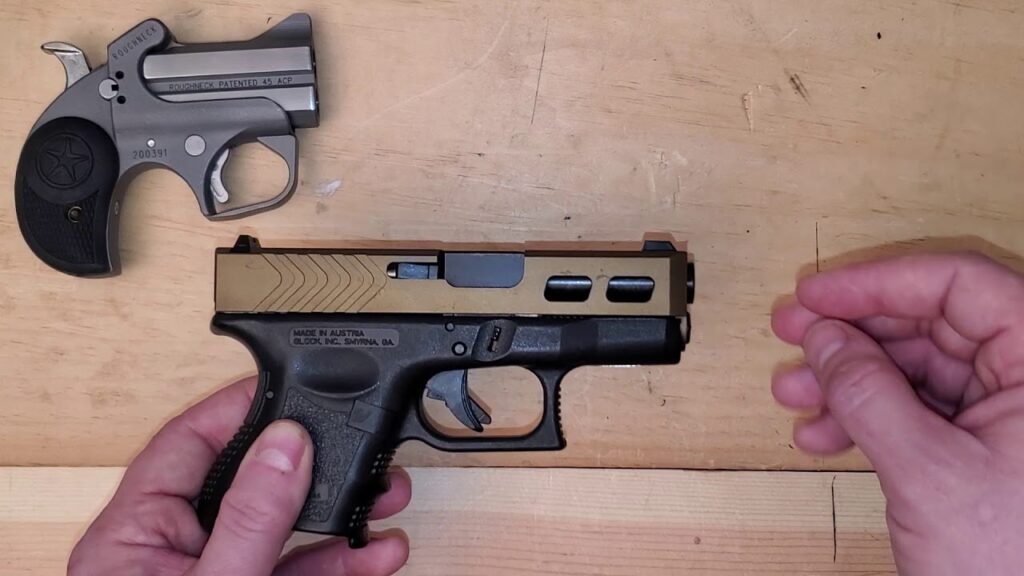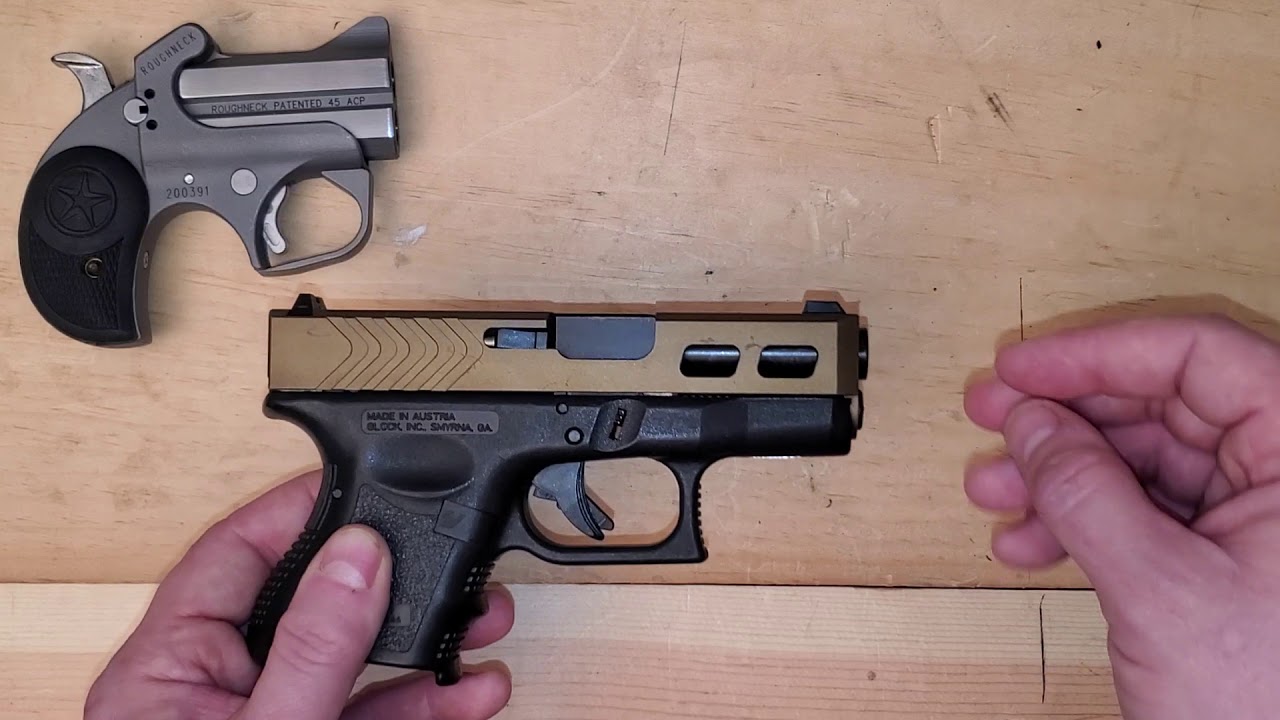
How Does the ATF Measure Barrel Length? A Comprehensive Guide
Determining barrel length is crucial for firearm owners and manufacturers, especially when complying with federal regulations. The Bureau of Alcohol, Tobacco, Firearms and Explosives (ATF) has specific guidelines on how does the ATF measure barrel length, and understanding these methods is essential to avoid legal issues. This comprehensive guide delves into the intricacies of ATF barrel length measurement, providing clarity and practical information for anyone involved with firearms.
Why Barrel Length Matters
Barrel length is a significant factor in determining whether a firearm is subject to the National Firearms Act (NFA). The NFA regulates certain types of firearms, including short-barreled rifles (SBRs), short-barreled shotguns (SBSs), and any other weapons (AOWs). A firearm falling under NFA regulations requires registration and compliance with stringent federal laws.
Specifically, rifles with barrels less than 16 inches and shotguns with barrels less than 18 inches are considered NFA items. The ATF’s method for how does the ATF measure barrel length is therefore critical in determining if a firearm falls under these restrictions. Misunderstanding or misinterpreting these measurements can lead to unintentional violations of federal law.
The ATF’s Official Measurement Method
The ATF has established a clear and specific method for measuring barrel length to ensure consistency and accuracy. This method is detailed in various ATF publications and rulings. Knowing how does the ATF measure barrel length accurately is key to compliance.
The Rod Method
The primary method used by the ATF involves inserting a rod into the barrel from the muzzle to the closed breech face. Here’s a step-by-step breakdown:
- Unload the Firearm: Ensure the firearm is completely unloaded before starting any measurement.
- Close the Action: Close the action (bolt or slide) of the firearm to simulate the firing position.
- Insert the Rod: Insert a rigid rod (typically a dowel or cleaning rod) into the barrel until it comes to a stop against the closed breech face.
- Mark the Rod: Mark the rod at the point where it exits the muzzle.
- Measure the Rod: Remove the rod and measure the distance from the end that was against the breech face to the mark you made. This measurement represents the barrel length.
This “rod method” is the standard for determining how does the ATF measure barrel length. It’s crucial to follow these steps precisely to achieve an accurate measurement.
Important Considerations
Several factors can affect the accuracy of barrel length measurements. These nuances are critical for understanding how does the ATF measure barrel length in complex scenarios:
- Permanent Attachment: If a muzzle device (like a flash hider or compensator) is permanently attached to the barrel, it is included in the overall barrel length measurement. “Permanently attached” typically means the device is welded, high-temperature silver soldered, or otherwise affixed in a manner that requires specialized tools to remove and is not easily removable.
- Non-Permanent Attachment: If a muzzle device is not permanently attached (e.g., threaded on with no additional securing method), it is not included in the barrel length measurement.
- Integral Suppressors: For firearms with integral suppressors, the measurement includes the length of the suppressor if it is permanently attached to the barrel.
- Breech Face: The measurement must be taken from the muzzle to the closed breech face. Any gap or space between the end of the chamber and the breech face must be considered.
Common Misconceptions and Pitfalls
Several misconceptions can lead to incorrect barrel length measurements. Avoiding these pitfalls is crucial for compliance with federal regulations. When considering how does the ATF measure barrel length, keep these in mind:
- Measuring to the End of the Threads: Some individuals mistakenly measure only to the end of the barrel threads, neglecting to include the length of a permanently attached muzzle device. This is incorrect and can lead to inaccurate measurements.
- Using Flexible Measuring Tapes: Flexible measuring tapes can introduce errors due to bending and stretching. A rigid rod provides a more accurate measurement.
- Assuming All Muzzle Devices are Permanent: Not all muzzle devices are considered permanently attached. Understand the criteria for permanent attachment to determine whether to include the device in the barrel length measurement.
- Ignoring the Breech Face: The measurement must extend to the closed breech face. Failing to account for this can result in a shorter-than-actual barrel length measurement.
Examples and Scenarios
To further illustrate how does the ATF measure barrel length, consider these scenarios:
Scenario 1: A rifle has a barrel that measures 14.5 inches. A flash hider is permanently welded to the barrel, extending the overall length to 16.1 inches. In this case, the rifle is not considered an SBR because the permanently attached flash hider brings the barrel length above the 16-inch threshold.
Scenario 2: A shotgun has a barrel that measures 17 inches. A muzzle brake is threaded onto the barrel but is not welded or otherwise permanently attached. In this case, the shotgun is considered an SBS because the barrel length is less than 18 inches, and the muzzle brake does not count towards the overall length.
Scenario 3: A pistol has a brace attached. The ATF measures the barrel length using the rod method, and it comes out to 10 inches. The pistol is not an SBR as it was originally designed to be fired by one hand. [See also: Understanding Pistol Braces and the ATF]
Why Accuracy Matters
The importance of accurate barrel length measurement cannot be overstated. Possessing an unregistered NFA firearm can result in severe penalties, including hefty fines and imprisonment. It is the responsibility of firearm owners and manufacturers to ensure compliance with federal regulations. Understanding how does the ATF measure barrel length is the first step in avoiding legal complications.
Furthermore, accurate measurements are crucial for maintaining ethical standards within the firearms industry. Responsible gun ownership includes adhering to all applicable laws and regulations. By understanding and following the ATF’s guidelines, individuals can contribute to a culture of compliance and safety.
Resources and Further Information
For more detailed information on barrel length measurement and NFA regulations, consult the following resources:
- ATF Rulings and Publications: The ATF regularly publishes rulings and guidance documents that provide detailed explanations of its policies and procedures. These documents are available on the ATF website.
- Legal Professionals: Consult with an attorney specializing in firearms law for personalized advice and guidance.
- NFA Firearm Experts: Seek advice from knowledgeable experts familiar with NFA regulations and compliance.
Conclusion
Understanding how does the ATF measure barrel length is fundamental for anyone involved with firearms. By following the established methods and considering the nuances of permanent attachments and breech face measurements, individuals can ensure compliance with federal regulations and avoid potential legal issues. Remember, accuracy and diligence are key to responsible gun ownership and participation in the firearms industry. Don’t hesitate to seek professional advice when in doubt, and always prioritize adherence to the law.
Navigating the complexities of firearms regulations requires careful attention to detail and a commitment to compliance. By staying informed and seeking guidance when needed, you can ensure that you are operating within the bounds of the law and contributing to a safe and responsible firearms community. When questioning how does the ATF measure barrel length, remember to consult official ATF resources for the most up-to-date and accurate information.
In conclusion, the ATF’s method for measuring barrel length is precise and requires careful adherence to specific guidelines. Whether you’re a firearm owner, manufacturer, or enthusiast, understanding these procedures is vital for compliance with federal law. By taking the time to educate yourself and seek professional advice when necessary, you can ensure that you are handling firearms responsibly and legally. When in doubt about how does the ATF measure barrel length, always refer to official ATF documentation and consult with legal experts to avoid any unintentional violations.

